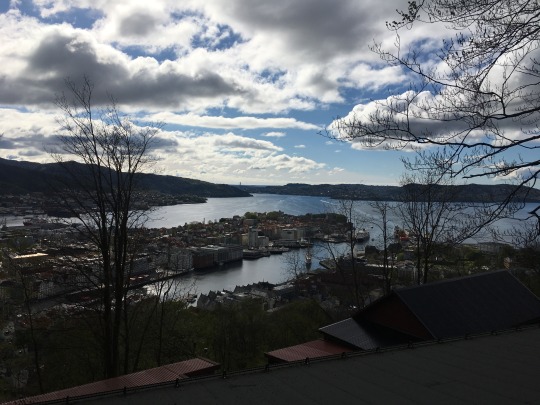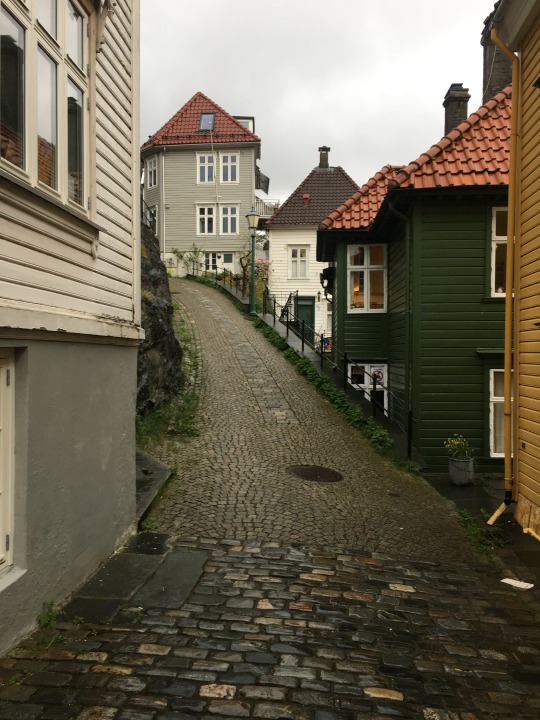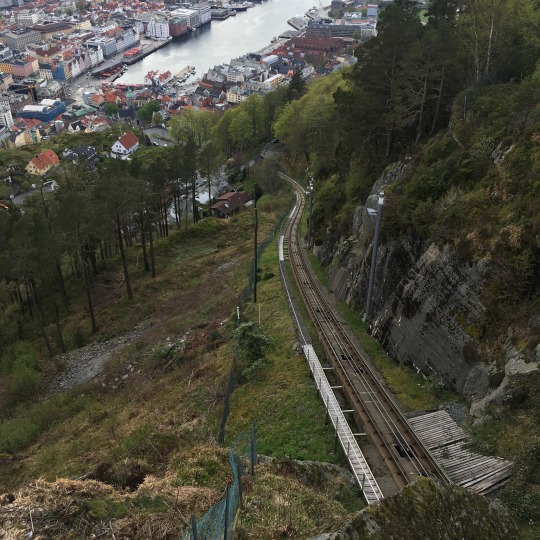#plyscraper
Text
Will we all live in 'Plyscrapers' in the future? 🏢🤔 BBC
Will we all live in 'Plyscrapers' in the future? 🏢🤔 BBC
Subscribe and 🔔 to the BBC 👉 https://bit.ly/BBCYouTubeSub
Watch the BBC first on iPlayer 👉 https://bbc.in/iPlayer-Home If we made 90% of our new buildings from wood, we could reduce our global CO2 emissions and improve our wellbeing, Tom Heap explains.
Rethink the Future / Streaming Now / BBC iPlayer 👉 https://bbc.in/3wWCS9O
Rethink the Future / Series 1 Episode 1 / BBC iPlayer
#BBC…

View On WordPress
#BBC iPlayer#British TV#British TV Shows#Building#Cities#environment#future#Green#Plyscrapers#United Kingdom#urban#Watch British TV Online#Watch British TV Shows Online#Watch UK TV Online
0 notes
Link
“[A] four-story building made of mass timber would save emissions equivalent to taking 500 gasoline cars off the road for a year.”
Regular skyscrapers use massive amounts of concrete, which releases CO2 during construction; the CO2 captured by the trees used to make a “plyscraper” is locked away for the life of the building. When a “plyscraper” is someday torn down its materials can be recycled rather than ending up in a landfill.
"Plyscrapers” are beginning to be built or planned in a variety of countries, including Australia, Canada, Norway, the United Kingdom, and the United States.
#sustainable building#sustainable architecture#good news#climate change#sustainability#hope#plyscraper#buildings#skyscraper
239 notes
·
View notes
Text
The World is Amazing, Actually pt11
It’s Good News Wednesday, for at least the next few minutes while you read this.

A doctor in a cancer clinic in Arkansas forgave $650,000 in patient debt.
Dr. Atik attributed the large sum to the fact that no patient was ever denied treatment, regardless of whether or not they could pay. “Not for lack of health insurance or funds nor for any other reason,” he told the Arkansas Democrat-Gazette. “I’ve always considered it a high honor and privilege to be someone’s physician—more important than anything else.”

Over 500 new species were discovered in the year 2020
Among the hundreds of species identified was a monkey called the Popa langur, found on the extinct Mount Popa volcano in Myanmar.... Scientists analyzed the coloration of the Popa langur's skin and bones and sampled its genetics to compare it to related species.
"Monkeys are one of the most iconic groups of mammals, and these specimens have been in the collections for over a hundred years," Roberto Portela Miguez, the senior curator in charge of mammals at the museum and involved in identifying the new species, told the National History Museum. "But we didn't have the tools or the expertise to do this work before."

There’s a new building technique for skyscrapers that is incredibly ecofriendly
The U.S. Department of Agriculture (USDA) agrees. It cites estimates that even a four-story building made of mass timber would save emissions equivalent to taking 500 gasoline cars off the road for a year. This is because while concrete emits nearly its own weight in carbon dioxide during production, trees absorb carbon from the atmosphere to grow.
So when a plyscraper goes up, that carbon is locked away for decades. And when the building is finally torn down, the wood can be recycled or burned for energy.

Arctic Oil Drilling Plans Suffer ‘Stunning Setback’ as Almost ‘No One Shows Up’ For the Sale
No Seriously, Only 2 Very Small Companies Even Came To The Initial Bidding (And they were just there to mingle)
So There Will Be No Drilling Of The Arctic Wild (For Now)
Suck It, 45
Previous || Next
#planet earth#good news#plyscrapers#architecture#biodiversity#endangered species#monkey#popa langur#dr atik#cancer doctor#medical debt#health care#people are okay#arctic drilling#big oil backs out#nature conservation
67 notes
·
View notes
Link
1 note
·
View note
Text
World's tallest 'plyscraper' planned for Asia
Skyscrapers made mostly of wood are rising around the world, and now plans have been announced to build what would be the world’s tallest “plyscraper” in Tokyo.The planned 70-story, 1,148-foot tower will include residential and commercial space and is intended to spotlight environmentally friendly architectural designs and construction technologies, its developer, Sumitomo Forestry Co., announced in a written statement.Plans for construction of the “W350 building” are underway, though the tower isn’t scheduled for completion until 2041.The total cost is estimated at 600 billion yen ($5.6 billion).The high-rise would dwarf the University of British Columbia’s 174-foot, 18-story Brock Commons building in Vancouver, Canada, which is currently the world’s tallest wooden building.Drawings of the new tower — a 90-percent wooden building with vibration-damping steel braces — show a boxy structure whose gridlike façades are studded with balconies and festooned with greenery.The building’s wood-lined atrium will enclose a large pool filled with reeds and lily pads.Sumitomo said its goal for the building is to show how cities might be transformed from artificial environments into a forest-like environment that is “a pleasant space for the people living there.”John Fernandez, a professor of architecture at MIT, understands that rationale.
“Timber buildings are very easy to associate with and fall in love with and appreciate because the material itself appeals to people,” he said.”Buildings that people really appreciate, value and feel something for are more sustainable than otherwise because people will protect them and take care of them.”Another goal for the building is to showcase the versatility of wood.Though wood has long been used as a building material, only recently have new forms of wood made it possible to build tall buildings out of wood.“There’s a whole bunch of new materials made out of wood that are structurally able to build big buildings,” Dr.
Michael Ramage, a senior lecturer and head of Cambridge University’s Center for Natural Material Innovation, told CNN.One such material, cross-laminated timber (CLT), is said to be stronger than concrete and more fire-resistant than conventional wooden building materials.Perhaps paradoxically, experts say that building with wood can be more sustainable than building with steel and concrete.Wood stores carbon that otherwise might wind up in the atmosphere as the greenhouse gas carbon dioxide, whereas the production of concrete and steel releases huge amounts of carbon dioxide into the atmosphere.“Buildings have a very long lifetime, especially large buildings,” Fernandez said.“So if we can store that carbon for 100 years, that’s extremely positive, and the storage itself doesn’t require energy.”And while building a tower the size of W350 requires the toppling of more than a few trees, “the amount of wood used in this building can be regrown in our global forests within a matter of hours,” Casey Malmquist, founder of SmartLam, a CLT manufacturer in Columbia Falls, Montana, told MACH in an email.“Sustainability is the key to our survival on this planet,” he added, “and by utilizing wood as a renewable and sustainable building material, we are taking a significant step in the right direction to a brighter future.”FOLLOW MACH ON TWITTER, FACEBOOK, AND INSTAGRAM.
Source: NBC News.
World’s tallest ‘plyscraper’ planned for Asia was originally published on NewsVomit
0 notes
Photo

Vật liệu xanh: Cuộc đối thoại giữa quá khứ và hiện tại Không thể phủ nhận, ngành xây dựng đang vươn mình mạnh mẽ với sự đa dạng của các loại vật liệu cùng những thiết kế mới tinh tế. Tuy nhiên, giữa muôn vàn chủng loại vật liệu mới mẻ ấy, vật liệu xây dựng xanh, đặc biệt là vật liệu xanh truy��n thống vẫn được nhiều người Việt ưu tiên sử dụng. Những vật liệu mà cha ông ta sử dụng từ xa xưa hầu hết đều là các vật liệu xanh, có nguồn gốc từ thiên nhiên nhưng được chế tác và sử dụng dưới bàn tay của những người thợ tài hoa, tạo nên nét đặc trưng trong kiến trúc truyền thống. Xin được mượn lời KTS. Đoàn Khắc Tình, Đại học Kiến trúc Hà Nội: “Chính tài nguyên xứ sở đã nuôi dưỡng tập quán xây dựng của người Việt. Cánh thôn quê vẫn thường nói: “Có trăm tre, nhăm nhe làm nhà”, là ý nhấn mạnh thứ vật tư quan trọng nhất, đủ làm nên bộ khung nhà truyền thống”.Nhà tranh tre nứa lá mát về mùa hạ ấm về mùa đông, dẻo dai chịu đựng gió bão, mưa nắng. Khắp các miền quê đâu cũng sẵn tre nứa. Họ nhà tre loại nào cũng đắc dụng: Bương, vầu thân to cật dầy, đốt ngắn, cứng cáp thì làm cột. Tre đằng ngà đặc ruột dẻo thân dùng làm đòn tay, xà tử, dạ cửa, bậu cửa. Mai trúc thân thẳng vỏ dày, gốc ngọn bằng bặn thì được bổ bẻ, chẻ đều để lát sàn, thưng vách… Nứa mỏng mềm thì đập dập thành ra lợi bản trải mái lợp hay đan phên ngăn, ken tấm dại. Rồi nứa tép, trúc cành, giang, mây, song… thứ nào cũng được việc cả. Tre ngâm độ sáu tháng đến một năm dưới bùn ao, vớt lên mềm dễ uốn vặn, để khô đi chống mối mọt tốt. Lại có thể luộc mây tre, chẻ làm lạt rồi gác bếp cho khói xông… Cây tre thật xứng với tính tình chịu thương chịu khó của người Việt. Cao cấp hơn tre là gỗ. Đinh, lim, sến, táu, vàng tâm, mộc lan là những hạng gỗ rừng lý tưởng để cất dựng đền miếu, đình chùa, cung điện. Trong dân gian thì phổ thông là xoan, mít, chò, keo, dổi, hồng sắc… Người thôn quê xưa có tính lo xa: Khi dựng vợ cho con trai, bao gi�� cũng gây sẵn bụi tre, hàng xoan hay mấy gốc mít nơi trước sân, mép vườn, bờ ao. Nhắm chừng 10 - 15 năm sau con cái có vật liệu làm nhà mới, vừa vặn thời gian chuyển đổi thế hệ nông trang. Xoan cao cây thân dài và thẳng, đoạn dưới làm cột, đoạn trên làm xà, kèo, hoành, bậu. Gỗ xoan thấm sẵn nhựa đắng, ngâm khoảng 1 năm chống chịu được mối mọt. Chả thế có câu “Nhà gỗ xoan – quan ông nghè”.Cái lợp cũng sớm được người xưa quan tâm tìm kiếm hoặc chế tác cho ngôi nhà khung tre gỗ, sao cho thích hợp với độ dốc mái và sự phân chia các tấm mái, tầng mái. Đó có thể là rơm, rạ hay lá cọ, lá mía, lá dừa, cỏ tranh, phên nứa, cói bổi… Chẳng hạn, nhà lợp cói (thông dụng ở Thái Bình) chống dột rất tốt. Trong nhà luôn mát mẻ vì các lớp sợi cói qua thời gian dính kết lại thành tấm xốp liền. Sau mỗi lần lợp chừng 5 năm, khi cói xẹp xuống người ta lại phủ lên trên mái cũ một lớp cói nữa. Cứ thế lớp mái cói có thể dày từ 0,3m – 0,5m. Ở một số địa phương Nam Trung bộ, Nam bộ, trên rui mè ken dày có khi người ta đổ một lớp đất sét rồi lợp lá dừa nước lên trên. Đất sét cách nhiệt, chống cháy tốt. Nhưng, cái chính là tại lá dừa mềm, mỏng không thể đánh tranh, khi khô nước mưa dễ lọt qua, nên đất sét có tác dụng làm cứng mái và chống thấm. Cao cấp hơn, người ta xẻ gỗ thành ván mỏng để lợp… Người Việt xây dựng nhà ở luôn đề cao tính chân thực, sự giản dị và tính chừng mực. Tính chân thực trước tiên ở thái độ ứng xử với vật liệu. Gỗ được sử dụng với những tính năng và vẻ đẹp vốn có, thường để mộc, sơn phủ hạn chế.Để tăng vẻ đẹp, vẻ thanh thoát cho căn nhà gỗ, người thợ xưa thường tạo ra những đường soi nét và viền trên những khúc gỗ lặng câm, chạm lộng những đầu dư, gắn những bức chạm giữa những xà dọc và xà ngang. Các công trình lớn như cung vua, phủ chúa, đền chùa phối hợp nhiều loại vật liệu xây dựng: Nền bó đá xanh, cột kèo bằng gỗ. Các thành phần khác thì dùng vôi, mật làm chất kết dính, trang trí bằng gốm. Hầu như không sử dụng sắt hay kim loại.Đá cũng là loại vật liệu tự nhiên truyền thống được sử dụng phổ biến. Ngôi nhà đầu tiên của con người là hang đá. Lịch sử nói chung và lịch sử kiến trúc nói riêng đều ghi nhận như vậy. Khi chưa thể tạo được những kiến trúc cho riêng mình, con người đã nương nhờ vào tự nhiên một cách rất bản năng. “Những kiến trúc cổ đại, trung đại còn tồn tại đến bây giờ đa phần bằng đá. Những công trình bền bỉ cùng năm tháng, trơ gan cùng tuế nguyệt phải là đá. Ở Việt Nam không có nhiều những công trình to lớn kỳ vĩ bằng đá, nhưng cũng có những kiến trúc bằng đá có giá trị cao ở cả góc độ nghệ thuật kiến trúc và kỹ thuật xây dựng. Có thể kể tới Nhà thờ đá Phát Diệm (Ninh Bình), Tháp Bút (Hà Nội)… Công trình lớn nhất bằng đá ở Việt Nam là Thành Nhà Hồ (Thanh Hoá)”, lời KTS. Nguyễn Trần Đức Anh. Tre, gỗ, đá, nứa, giang, mây…, những vật liệu thiên nhiên đã được thổi hồn dân tộc tạo nên kiến trúc truyền thống giản dị nhưng lại rất ưu việt. Đời trước dùng kỹ nghệ khéo léo mà biến những thanh tre, khúc gỗ, tảng đá vô tri thành những công trình mang đậm bản sắc văn hóa, những tuyệt tác kiến trúc từ thiên nhiên để đời sau tiếp tục kế thừa và vận dụng. Sự phát triển kinh tế cùng với sự bào mòn của thời gian đã đẩy lùi những mái nhà tranh tre, gỗ nứa…về quá khứ. Thay vào đó là những khối bê tông cao tầng. Nhưng trớ trêu thay, tốc độ đô thị hóa nhanh đã đặt ra nhiều dấu hỏi về yếu tố bền vững của công trình bên cạnh những tác động của chúng đến môi trường sinh thái. Một lần nữa, tre, gỗ, đá,... trở thành “cứu tinh” cho đô thị, tạo nên những mảnh ghép xanh cho các công trình kiến trúc hiện đại. Tuy nhiên chúng được biến hóa, ứng dụng linh hoạt hơn, phù hợp với thời đại hơn. Trải qua thăng trầm của lịch sử, với tính chất dẻo dai, cứng cáp, có tuổi thọ lên đến hàng thế kỷ, tre đã khiến kiến trúc sư Neil Thomas với nhiều năm tìm hiểu về loại vật liệu này trên khắp thế giới phải thốt lên rằng: "Tre là loại vật liệu xây dựng tiến gần đến sự hoàn hảo nhất". Không chỉ có thể sử dụng thay thế bê tông, sắt, thép mà với sự tiến bộ của khoa học kỹ thuật, áp dụng công nghệ hiện đại, vật liệu tre đã được chế biến thành rất nhiều loại sản phẩm trang trí nội thất. Sàn tre, trần tre, đồ nội thất bằng tre, các tấm ván tường bằng tre... mang lại các ưu điểm như nhiều hoa văn độc đáo, màu sắc tự nhiên và giữ được độ sáng trong nhiều năm, chịu nhiệt độ cao và hạn chế khả năng bén lửa, đem lại không gian độc đáo cho công trình. Tuy nhiên, trong thời buổi đô thị nén như hiện nay thì tre ít nhiều bộc lộ những nhược điểm. "Tre thích hợp làm vật liệu cho các công trình thấp tầng, những công trình quy mô nhỏ, mang tính tạo cảnh quan, điểm nhấn chứ không thể làm thành những công trình lớn, quy mô. Ngoài ra, dùng vật liệu này cũng khá tốn năng lượng do khả năng cách âm, cách nhiệt hạn chế", lời nhận xét của kiến trúc sư Hoàng Thúc Hào. Khắc phục được hạn chế đó của tre, vừa đáp ứng những yêu cầu về công trình xanh, vừa giải quyết vấn đề của đô thị nén, gỗ đã được không ít các kiến trúc sư lựa chọn, trở thành vật liệu chính trong công trình thiết kế của mình. Tuy nhiên, trước yêu cầu về kết cấu và cách thức xây dựng để công trình vươn cao hơn, được hoàn thiện nhanh hơn và tránh tác động tiêu cực tới môi trường, thì gỗ dạng thô thông thường sẽ chẳng bao giờ có thể sánh được với kết cấu khung thép. Khắc phục khiếm khuyết đó, một loại vật liệu gỗ ép được phát triển vượt qua mọi yêu cầu, thách thức đã đặt ra. Bằng cách dán các lớp gỗ mềm, cấp thấp hơn lại với nhau thành tấm gỗ hoàn chỉnh, “gỗ tiền chế” vừa mang dáng vẻ của loại vật liệu truyền thống vừa mang hơi thở của phát kiến hiện đại. Đồng thời, vật liệu gỗ tiền chế này ngày càng được sử dụng rộng rãi, mở ra một kỉ nguyên mới thân thiện với môi trường sinh thái, kỷ nguyên của công trình “plyscrapers” (nhà cao tầng làm từ gỗ ép). Bên cạnh tre, gỗ thì đá cũng là vật liệu truyền thông được ứng dụng phổ biến trong các công trình ngày nay. Không chỉ đáp ứng về độ bền bỉ với thời gian, còn tăng tính thẩm mỹ bởi sự đa dạng về màu sắc, hoa văn sang trọng, đẹp mắt. Chẳng phải ngẫu nhiên mà đá được xem là vật liệu "kinh điển" của thế giới, trải qua hàng nghìn năm, đá tự nhiên vẫn giữ được ví trí độc tôn, không thể thay thế trong các công trình kiến trúc và gắn liền với sự phát triển của các nền văn minh khác nhau. Cũng chính vì vậy, vật liệu đá thường xuyên được sử dụng cho các công trình quan trọng của quốc gia như công trình Nhà Quốc hội, Trung tâm Hội nghị Quốc gia, Trung tâm Thông tấn quốc gia, Nhà hát Lớn, Bảo tàng Lịch sử,...Có thể thấy, tre, gỗ, đá vẫn đang được lưu giữ, ứng dụng qua bàn tay tài hoa và con mắt nghệ thuật của các kiến trúc sư, kỹ sư xây dựng. Một sự kết hợp hoàn hảo giữa chất truyền thống trong sử dụng vật liệu và tính hiện đại trong các thiết kế, tất cả tạo nên công trình kiến trúc có độ thụ cảm thẩm mỹ cao, hơn cả là mang trong đó hồn sắc của dân tộc ngàn đời. Nhớ lại thời kỳ đất nước đổi mới, bắt đầu bước vào kỷ nguyên kỳ công nghiệp hóa, hiện đại hóa, các loại vật liệu xây dựng mới xuất hiện ngày càng nhiều, việc sử dụng các vật liệu xanh truyền thống đồng nghĩa sẽ bị hạn chế, ít được ứng dụng hơn. Tuy nhiên những năm gần đây, khi mà lượng chất thải từ ngành công nghiệp xây dựng đang là gánh nặng với môi trường, thì những loại vật liệu xanh, truyền thống lại chính là “nơi để trở về” của kiến trúc hiện đại, và trở thành lựa chọn hàng đầu trong bảo vệ hệ sinh thái.Tuy nhiên, những vật liệu như tre, gỗ, đá đều thuộc về thiên nhiên, nếu sử dụng, khai thác ở mức độ lớn thì sớm muộn cũng cạn kiệt, thậm chí tác động tiêu cực đến hệ sinh thái tự nhiên. Do vậy, cùng với xu hướng xanh hóa công trình, ngành xây dựng đã cho ra đời nhiều loại vật liệu xanh mới. Có thể kể đến như gạch không nung, gạch làm từ sợi nấm, thạch cao, xốp cách nhiệt, tôn lợp sinh thái... Nhưng xét cho cùng, dù những vật liệu mới kia có dễ dàng, tiện lợi trong thi công công trình, đáp ứng được nhiều yêu cầu trong ngành xây dựng đi chăng nữa, thì những vật liệu truyền thống vẫn không hề "lép vế", mà càng khẳng định vị trí của mình trong các công trình kiến trúc với nhiều tiềm năng, giá trị đang được khai mở. Bởi có một thực tế rằng, khi xã hội càng phát triển, người ta càng muốn lưu giữ những hình ảnh xưa cũ, gợi nhớ lại bóng hình của dân tộc. Và thực tế, những gỗ, tre, đá… luôn đem lại cảm giác mộc mạc, như một sự trở về, ấm áp gần gũi, giản dị mà vững chãi. Hạnh Liên/Thiết kế: Hồng Hạnh » [ad_2] Nguồn Reatimes
0 notes
Link

This 18-story "plyscraper" has opened its doors! It is the tallest timber-framed structure in the world... check it out here!
The World's Tallest Timber-Framed Building Finally Opens Its Doors
Located in central Norway, Mjøstårnet is a 280-foot-tall structure that is pushing the limits of architecture and setting a path for the sustainable cities of tomorrow
0 notes
Photo

Prefab Plyscraper: World’s Tallest Timber Building Tops Out at 173 Feet - sustainable wood buildings weigh less, cost less, require less energy, are more resistant to earthquakes and fires, and capture carbon as well http://ift.tt/2k2Y7pM
2 notes
·
View notes
Text
Bergen: A Whirlwind Tour

Our travels through the Norwegian countryside by train, bus, and ferry ultimately landed us in Bergen. We allotted ourselves just two days here in favor of more time in the Arctic. Framed by water and mountains, it reminded me a bit of Pittsburgh viewed from a distance.

Learning about Bergen’s rich history very much added to my enjoyment of the visit. Bergen’s membership in the Hanseatic League shaped a significant part of its evolution and the Hanseatic Museum on the Bryggen compellingly recounts this story. The museum resides in the best preserved of the famous wooden houses from the early 18th century. Some of the rooms are arranged as they would have been when the house was in use and include detailed descriptions of the artifacts therein. The house itself is still unheated (and Bergen can be damn cold), enhancing an already powerful portrait of life when maritime trade dominated the economy.
While one might expect to find many old buildings in a city that functioned as a trading post for a thousand years, few structures date before 1702, the year a fire razed over 90% of Bergen. Many of the oldest houses are in Fjellet Nord, a neighborhood on a hill overlooking the Bryggen. I found it interesting that this area, like the rest of the city, was very much under construction. Quite a few old houses have what look like very modern additions - energy efficient windows, balconies made from modern materials, even a few garages. I found this especially refreshing coming from San Francisco, a city with far less history yet far more determination to resist change.
View of a typical street in Fjellet Nord:

Bergen also has plenty of brand new construction. We made a trip across the city to see Treet (literally “the tree”), the tallest wooden structure in the world at 14 stories. It achieves this height through the use of modern engineered wood, hence the term “plyscraper”. Treet also shows beautiful architecture befitting such an engineering marvel. The best views are had from the left side of the Puddefjord Bridge crossing from the city center.

We would have preferred to spend more time outdoors exploring the city, but a combination rainstorm and cold snap moved in. Some amount of rain is nearly inevitable when visiting Bergen, where it rains 200 days a year and the least rainy month averages ~13 rainy days.
The rain gave us an opportunity to discover KODE 3, which gets everything right that the Munch museum in Oslo gets wrong. This museum does a wonderful job of showing the evolution of Norwegian art starting with I.C. Dahl’s landscape work. The Norwegians evolved to favor capturing people as they were instead of artificial poses. Much like the Vigeland installation in Oslo, many of these works are very engaging and human. I found “Sleeping Family” by Christian Krohg a remarkable example of naturalist art.

KODE 3′s Edvard Munch collection is second to none, far surpassing the Munch museum in Oslo. The works span every phase of his career and are arranged to show his evolution as both an artist and a human being. This museum also felt lightly trafficked compared to the Munch museum.
After visiting KODE 3, we thought it might be the last thing we would do in Bergen. We wanted to explore Mount Fløyen, but the weather was absolutely bone-chilling, so we gave up on this idea and returned to our flat to spend some time reading, relaxing, and thawing out. However, all was not lost. The weather can turn very quickly in Bergen, and around 6PM, the skies suddenly cleared, giving us nearly 4 hours(!) of sunlight to explore the mountain.
The most typical route up the mountain is the Fløibanen, a funicular that travels from the city center straight to the best viewpoint in the city. A funicular is rare in and of itself. This example features a curved track, making it especially unusual.

If you are reasonably fit, I recommend skipping the Fløibanen and walking up the mount. The path from city center to the viewpoint is only 3km with a 300m elevation gain, so the ascent is not particularly difficult. The route offers many beautiful vistas of Bergen and its surroundings, with the most remarkable of these views at the very top.

This concluded our brief stay in Bergen. Onward to Trømso!
1 note
·
View note
Text
Eco-Friendly 'Plyscrapers' Are on the Rise. Here's Why - https://goo.gl/ueezz3 - #Auto_Insurance, #EcoFriendly, #Heres, #Plyscrapers, #Rise
0 notes
Text
Tokyo to build 350m tower made of wood
https://www.theguardian.com/cities/2018/feb/16/plyscraper-city-tokyo-tower-wood-w350
Comments
0 notes
Text
Mass timber tower time lapse
Over the past few years there’s been growing interest in using mass timber for high-rise buildings (now colloquially referred to as “plyscrapers”).
One project that got a lot of attention last year is Brock Commons (student residence) at the University of British Columbia. It is an 18-storey hybrid mass timber tower.
The first and second floor (slab) and the two cores are poured-in-place concrete. After that, the other 16 floors of the tower consist of 5-ply cross laminated timber (CLT) panels and glue laminated timber (glulam) columns running every 10 feet. The roof is steel and metal decking.
Below is a great time lapse video of the building under construction once it had switched over to timber. The wood construction portion started on June 6, 2016 and finished on August 10, 2016. So 2 floors per week.
The video is well-annotated so that you know what week of construction it is, how many wood installers are on-site, which structural members are going in (along with their dimensions), and so on. The CLT panels are only 169mm thick.
Click here if you can’t see the video below.
youtube
#mass timber#construction#clt#cross laminated timber#glulam columns#wood#wood construction#brock commons#ubc#vancouver#university of british columbia#bc#construction methods#design#time lapse#video#hybrid tower#residence#student residence#architecture
3 notes
·
View notes